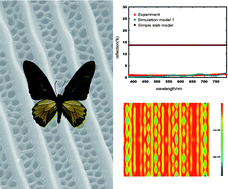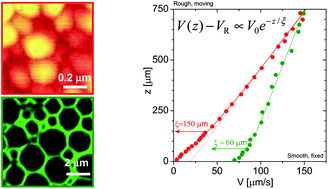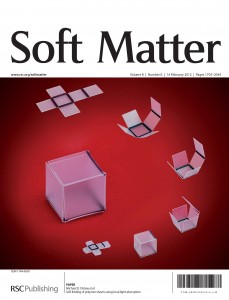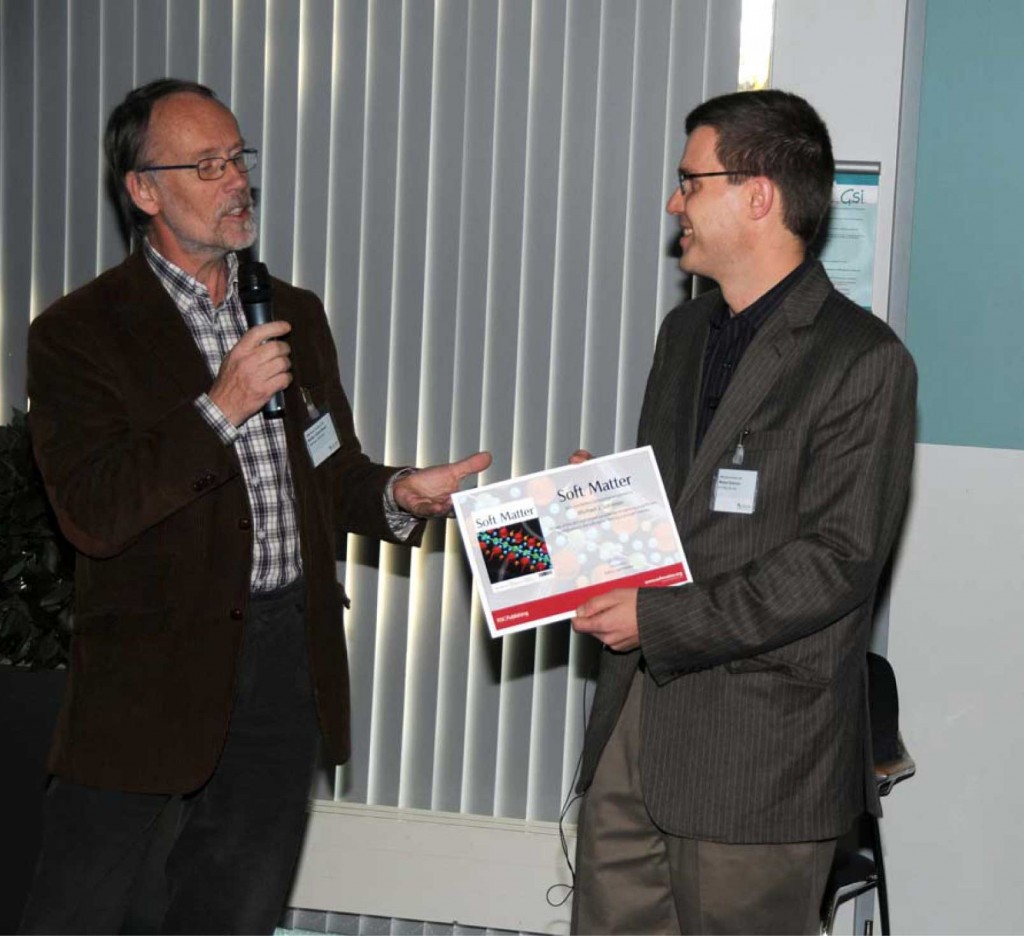This month sees the following articles in Soft Matter that are in the top ten most accessed for December:
The transparent crab: preparation and nanostructural implications for bioinspired optically transparent nanocomposites
Md. Iftekhar Shams, Masaya Nogi, Lars A. Berglund and Hiroyuki Yano
Soft Matter, 2012, 8, 1369-1373
DOI: 10.1039/C1SM06785K
Extreme wettability and tunable adhesion: biomimicking beyond nature?
Xinjie Liu, Yongmin Liang, Feng Zhou and Weimin Liu
Soft Matter, 2012, 8, 2070-2086
DOI: 10.1039/C1SM07003G
Chemistry at the polymer–particle interface for the design of innovative materials
Melanie Bradley
Soft Matter, 2012, 8, 1268-1274
DOI: 10.1039/C2SM06882F
Side-chain selenium-containing amphiphilic block copolymers: redox-controlled self-assembly and disassembly
Huifeng Ren, Yaoting Wu, Ning Ma, Huaping Xu and Xi Zhang
Soft Matter, 2012, 8, 1460-1466
DOI: 10.1039/C1SM06673K
Gel-nanocomposites: materials with promising applications
Dibyendu Das, Tanmoy Kar and Prasanta Kumar Das
Soft Matter, 2012, Advance Article
DOI: 10.1039/C1SM06639K
Core–shell microgels as “smart” carriers for enzymes
Nicole Welsch, Alisa L. Becker, Joachim Dzubiella and Matthias Ballauff
Soft Matter, 2012, 8, 1428-1436
DOI: 10.1039/C1SM06894F
Dynamic self-assembly of photo-switchable nanoparticles
Prateek K. Jha, Vladimir Kuzovkov, Bartosz A. Grzybowski and Monica Olvera de la Cruz
Soft Matter, 2012, 8, 227-234
DOI: 10.1039/C1SM06662E
On measuring colloidal volume fractions
Wilson C. K. Poon, Eric R. Weeks and C. Patrick Royall
Soft Matter, 2012, 8, 21-30
DOI: 10.1039/C1SM06083J
Hydrophilic and superhydrophilic surfaces and materials
Jaroslaw Drelich, Emil Chibowski, Dennis Desheng Meng and Konrad Terpilowski
Soft Matter, 2011, 7, 9804-9828
DOI: 10.1039/C1SM05849E
Self-assembly of p-shaped copolymers
Houyang Chen and Eli Ruckenstein
Soft Matter, 2012, 8, 1327-1333
DOI: 10.1039/C2SM06968G
Why not take a look at the articles today and blog your thoughts and comments below.
Fancy submitting an article to Soft Matter? Then why not submit to us today!
To keep up-to-date with all the latest research, sign up for the Soft Matter e-Alert or RSS feeds or follow Soft Matter on Twitter or Facebook.















